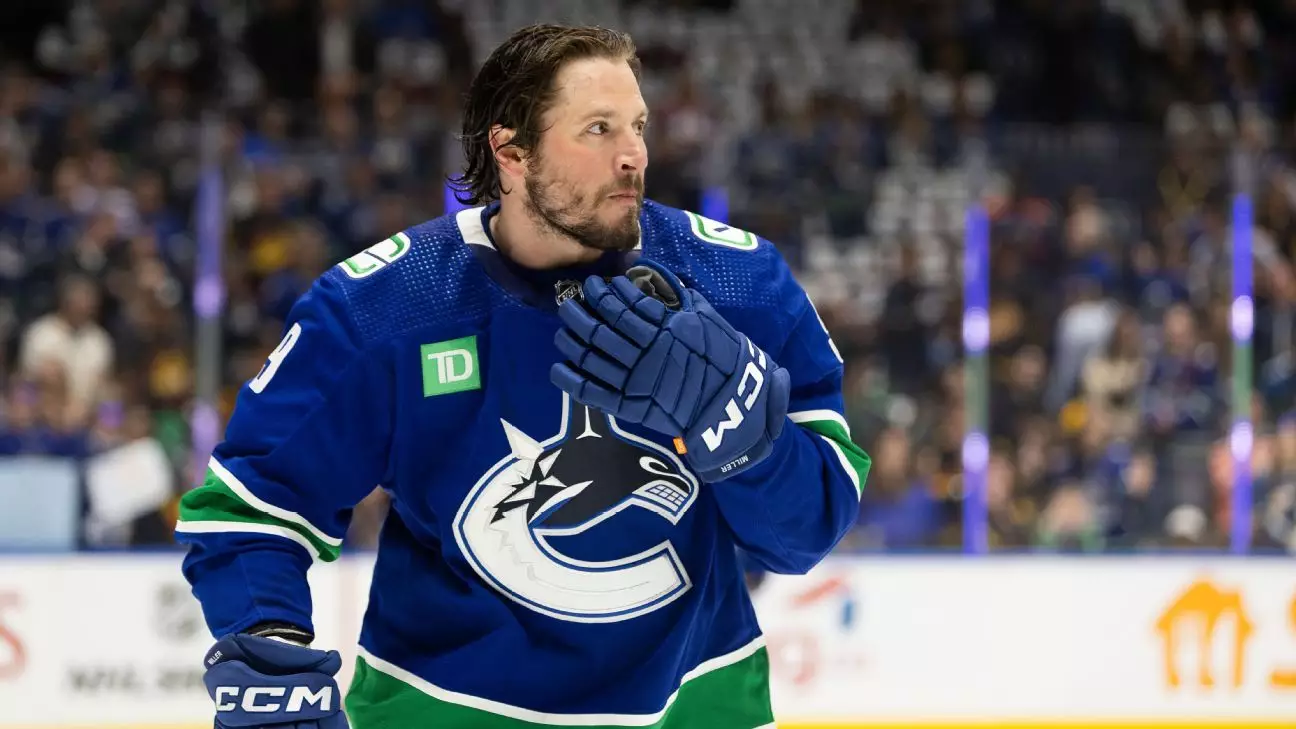The Vancouver Canucks are currently navigating turbulent waters, both on and off the ice. A recent revelation concerning potential trade discussions involving key players has placed the team in the spotlight. General Manager Patrik Allvin recently addressed the media about the state of the team, particularly the future of forward J.T. Miller. What ostensibly began as a routine press conference quickly turned into a deeper exploration of the ongoing challenges faced by the organization during the season.
As the trade rumors surrounding Miller circulated, they hinted at a significant shift within the organization. Reports indicated that discussions between the Canucks and the New York Rangers were serious enough to consider holding Miller out of an important game. However, ultimately, the potential transaction fell through, leaving the Canucks and their fans pondering Miller’s future. Allvin’s response to inquiries about these discussions was notably noncommittal. He emphasized his commitment to exploring avenues for improvement without divulging the intricacies of negotiations—an approach that reflects a careful balancing act typical of NHL management.
Miller’s tenure in Vancouver suggests a significant investment from both the player and the organization. He joined the Canucks in the 2019-20 season, and after a standout performance last year, leading the team with 103 points, expectations for his role have been multifaceted. Nevertheless, a less favorable record this season, with the Canucks’ standing outside postseason contention, has raised questions about whether foundational pieces like Miller may soon be in flux.
Adding another layer of complexity to the Canucks’ scenario is the reportedly strained relationship between Miller and star center Elias Pettersson. Insights from former coach Bruce Boudreau suggested that the complications between the two players have persisted prior to his tenure. A moment at a recent practice encapsulated the tension, with comments exchanged openly that underscored their difficult rapport. This schism may not only impact player morale but also has the potential to shape trade decisions as the team grapples with its present state and future implications.
While Allvin expressed sympathy for his players regarding the media frenzy surrounding these rumors, he simultaneously acknowledged their resilience in maintaining focus on the game. His appreciation for players blocking out external noise is a testament to a greater theme of unity that he endeavors to foster within the organization.
The Canucks’ overall performance this season has yet to meet expectations. With an unsatisfactory 20-15-10 record, questions linger about team dynamics and management effectiveness. Allvin underlined his belief in the team’s core capabilities, indicating that when performing at their best, they possess playoff potential. However, stunted relationships and inconsistent performances raise broader concerns about whether the team can realize that potential amidst adversity.
Coach Rick Tocchet’s leadership has taken on new significance amid these challenges. Allvin solidified his confidence in Tocchet’s ability to navigate a tough season, a sentiment backed by the presence of a club option for the 2025-26 season. The intertwined nature of management decisions, coaching philosophy, and player dynamics makes for a compelling narrative framing the overarching strategy of the franchise.
As the Canucks hover at a crossroads, their prospects are mixed yet pregnant with possibility. The specter of trades, player tensions, and a struggling season presents hurdles that need strategic navigation. However, Allvin’s belief in his roster, as well as Tocchet’s capabilities, indicates an understanding that with the right adjustments, success can emerge from adversity.
The narrative around Miller, both as a player and a figure within the locker room, remains pivotal. Should the Canucks reconcile existing tensions and galvanize their talent, they may yet find themselves not just competing but excelling in an unforgiving Pacific Division. Ultimately, the outcomes of these evolving narratives may redefine the organization’s future trajectory as it seeks to reestablish itself as a competitive force in the NHL.

